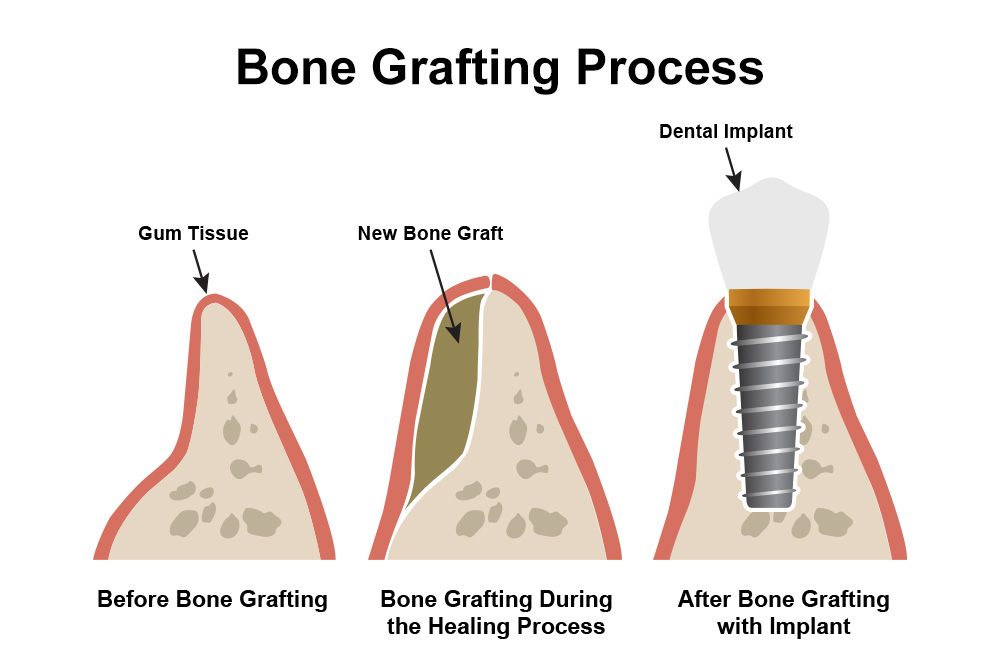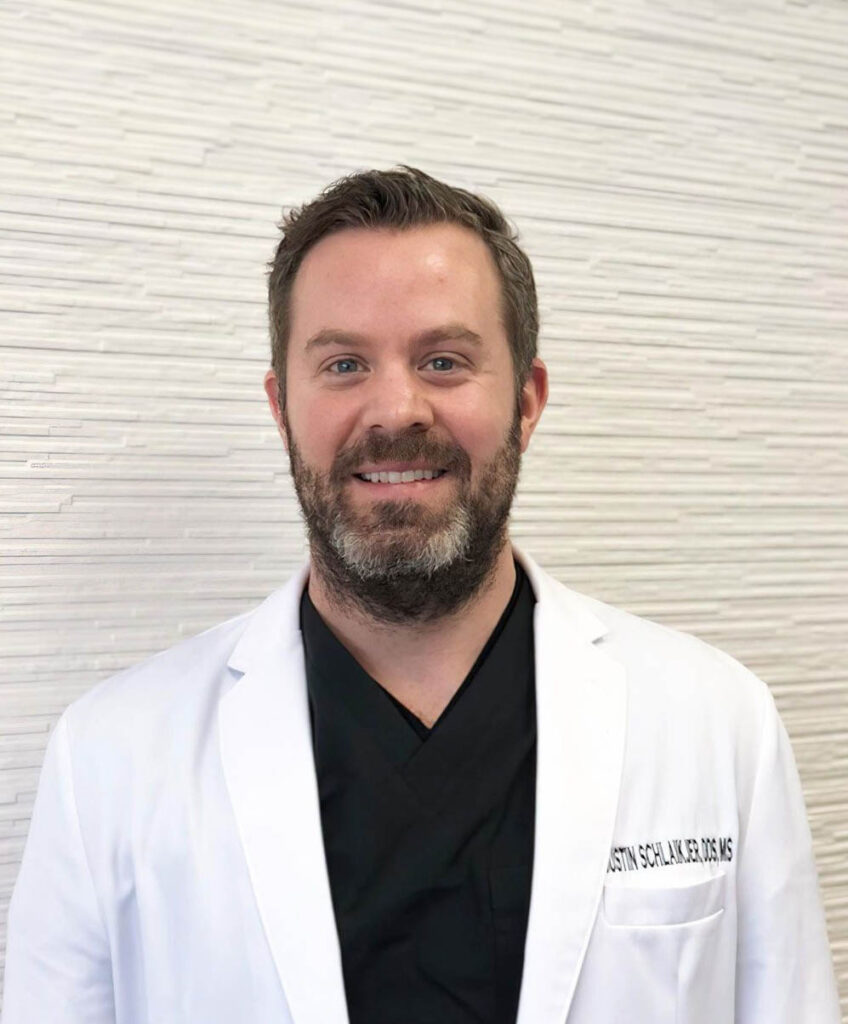- 10777 Sunset Office Dr Ste. 310, Sunset Hills, MO 63127
Losing a tooth does more than leave a gap in your smile. Tooth roots are vital to keeping the jawbone strong. Without stimulation from the roots, the jawbone loses density, causing the jaw to shrink over time. The remaining teeth will shift, causing complications for your bite and oral health.
A bone graft can increase jawbone density again after bone loss and create a solid foundation for dental implants. Without enough bone tissue in the jawbone, implants will not have the proper support to be effective.
These combined dental procedures will give your back your bite and help maintain the integrity of your jaw for years to come.

Losing bone density in your jaw causes it to whither, eventually giving your face a sunken look. Bone grafting reinforces the jaw, and allows for implant-supported restorations to restore your facial structure even further.
After a bone graft procedure, our periodontists typically recommend replacing any missing teeth with dental implants. Next to having natural teeth, implants are the best choice for a strong smile.

Our periodontist, Dr. Justin Schlaikjer, specializes in gum disease and placing dental implants. As a practice that has helped patients across St. Louis reclaim their smiles, we have numerous favorable reviews and are highly reputable.
Whether you just lost a tooth or have been living with widespread tooth loss for some time, Dr. Schlaikjer’s dental office can review the health of your jaw and prepare you for implants. We use leading-edge technology to make a precise map of your gums and teeth, enabling our doctors to personalize your treatment to meet your specific needs.
Contact our St. Louis, MO, office today to strengthen your jaw and replace missing teeth.
Request a Consultation
The grafts used in a bone grafting procedure are made from bone or similar material that fills the area of lost bone tissue. Your bone graft may include these materials:
Bone for the graft can be taken from the patient, usually from elsewhere in the jaw. Known as an autograph, this graft is a great option since the transported bone has living cells and tissue.
An allograft is bone material harvested from a human donor. Dr. Schlaikjer works with reputable tissue banks that provide reliable material which has been tested and disinfected.
A synthetic option, alloplast grafts are made of material compatible with the body and encourage bone growth. Eventually, the alloplast graft will be replaced by natural bone.
Although all bone grafting treatments are personalized to meet each patient’s needs, each graft has similar steps. Here’s what to expect during a bone graft with Dr. Schlaikjer in St. Louis, MO.
Local anesthesia is administered for your comfort, numbing the treatment area. If you have dental anxiety or difficulty sitting still, sedation is available to help you relax during the procedure.
The doctors access the underlying bone through a small incision made along the gumline.
The graft material is placed to fill in the holes from bone loss. Bone graft material can be natural or synthetic.
Once the graft material is in place around the bone, the incision is closed with stitches.
It can take about four to six months to completely heal from your bone grafting. During these months, the graft encourages the growth of new bone. Do not smoke or use tobacco products while your mouth is healing as it can interfere with a successful bone graft recovery. Tobacco will also hinder your candidacy for dental implants.
You will attend regular checkups at our St. Louis dental office so our doctors can make sure your gums are healing as intended. If you experience any pain or unexplained bleeding weeks or months after your bone graft, contact us right away.
While bone grafts are usually used to prepare for dental implants, the procedure can be beneficial for some patients suffering from other oral conditions as well. These include:
Periodontal disease can deteriorate bone in your jaw. A bone graft can strengthen your jaw and stabilize your remaining teeth.
An injury or an accident can knock your teeth out or damage them beyond repair. A bone graft can replace missing bone tissue and help keep your teeth from shifting.
Left untreated, tooth decay can damage bone in the jaw. This treatment can repair some of the damage caused by extensive decay.
Congenital defects or the effects of tumor surgery on the jaw can also keep your jaw from functioning properly, but bone grafting can add the missing tissue.
It can take about four to six months to completely heal from your bone grafting. During these months, the graft encourages the growth of new bone. Do not smoke or use tobacco products while your mouth is healing as it can interfere with a successful bone graft recovery. Tobacco will also hinder your candidacy for dental implants.
You will attend regular checkups at our St. Louis dental office so our doctors can make sure your gums are healing as intended. If you experience any pain or unexplained bleeding weeks or months after your bone graft, contact us right away.
Once you are fully healed from your bone grafting procedure, your jaw should have enough density for implants to fuse with your bone.
Our doctors recommend implants for their stability and superior function compared to traditional prosthetics. Implants also act like tooth roots, stimulating the bone in your jaw and preventing atrophy from reoccurring.
After the implants fuse with bone and bone graft material, they’re virtually as strong as natural teeth. Durable and capable of lasting a lifetime, implants are the superior choice to replace missing teeth.

As a restorative treatment, bone grafting may be covered by your insurance. If your dental insurance covers part of your bone graft, our team will be happy to work with your provider to get the most from your benefits.
Financing is available for patients who qualify. CareCredit® and LendingClub spread treatment costs into a series of payments. This makes treatment accessible, allowing people to fit this life-changing treatment into their budget.
Periodontics and Implant Dentistry in St. Louis, MO